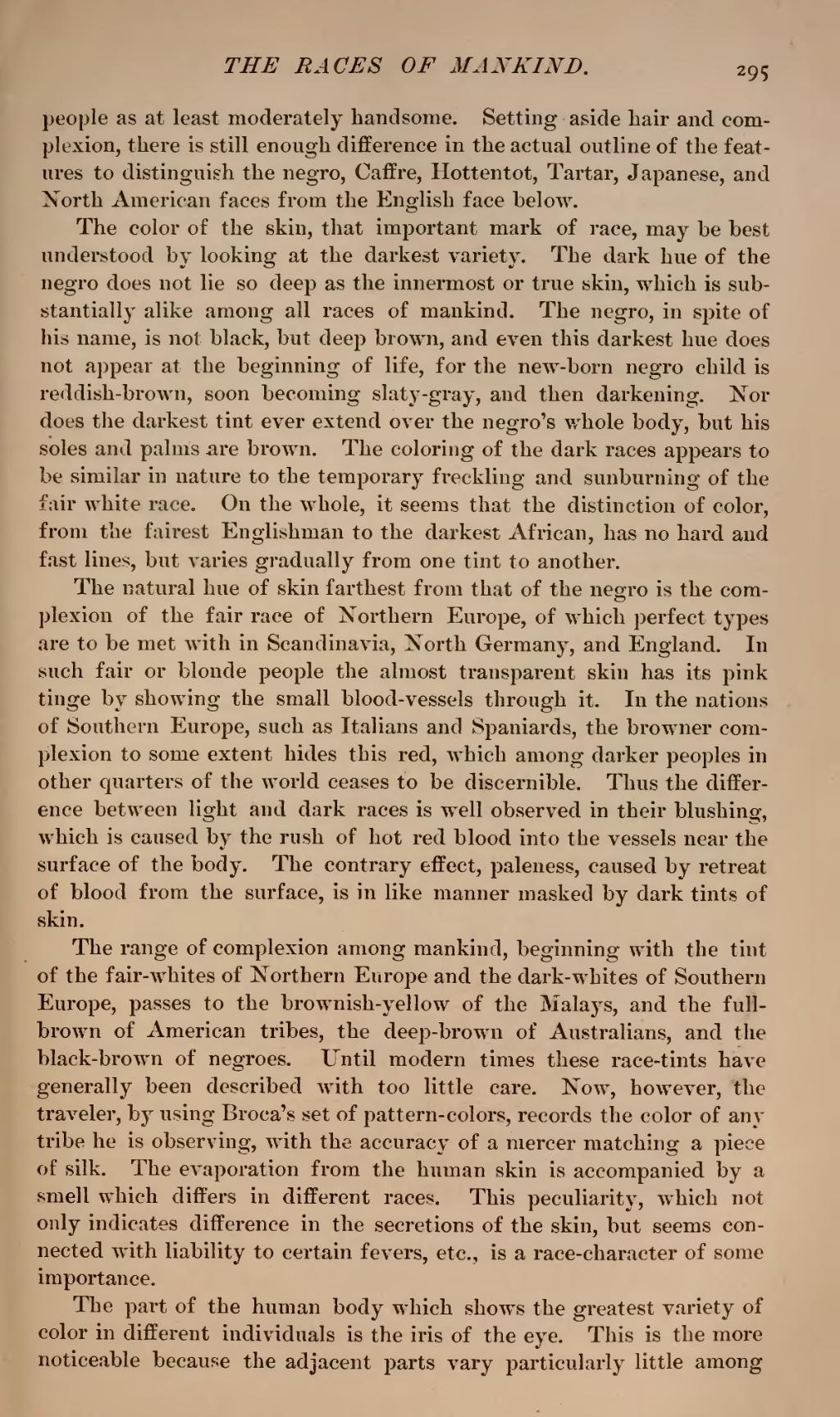people as at least moderately handsome. Setting aside hair and complexion, there is still enough difference in the actual outline of the features to distinguish the negro, Caffre, Hottentot, Tartar, Japanese, and North American faces from the English face below.
The color of the skin, that important mark of race, may be best understood by looking at the darkest variety. The dark hue of the negro does not lie so deep as the innermost or true skin, which is substantially alike among all races of mankind. The negro, in spite of his name, is not black, but deep brown, and even this darkest hue does not appear at the beginning of life, for the new-born negro child is reddish-brown, soon becoming slaty-gray, and then darkening. Nor does the darkest tint ever extend over the negro's whole body, but his soles and palms are brown. The coloring of the dark races appears to be similar in nature to the temporary freckling and sunburning of the fair white race. On the whole, it seems that the distinction of color, from the fairest Englishman to the darkest African, has no hard and fast lines, but varies gradually from one tint to another.
The natural hue of skin farthest from that of the negro is the complexion of the fair race of Northern Europe, of which perfect types are to be met with in Scandinavia, North Germany, and England. In such fair or blonde people the almost transparent skin has its pink tinge by showing the small blood-vessels through it. In the nations of Southern Europe, such as Italians and Spaniards, the browner complexion to some extent hides this red, which among darker peoples in other quarters of the world ceases to be discernible. Thus the difference between light and dark races is well observed in their blushing, which is caused by the rush of hot red blood into the vessels near the surface of the body. The contrary effect, paleness, caused by retreat of blood from the surface, is in like manner masked by dark tints of skin.
The range of complexion among mankind, beginning with the tint of the fair-whites of Northern Europe and the dark whites of Southern Europe, passes to the brownish-yellow of the Malays, and the full brown of American tribes, the deep-brown of Australians, and the black-brown of negroes. Until modern times these race-tints have generally been described with too little care. Now, however, the traveler, by using Broca's set of pattern-colors, records the color of any tribe he is observing, with the accuracy of a mercer matching a piece of silk. The evaporation from the human skin is accompanied by a smell which differs in different races. This peculiarity, which not only indicates difference in the secretions of the skin, but seems connected with liability to certain fevers, etc., is a race-character of some importance.
The part of the human body which shows the greatest variety of color in different individuals is the iris of the eye. This is the more noticeable because the adjacent parts vary particularly little among
